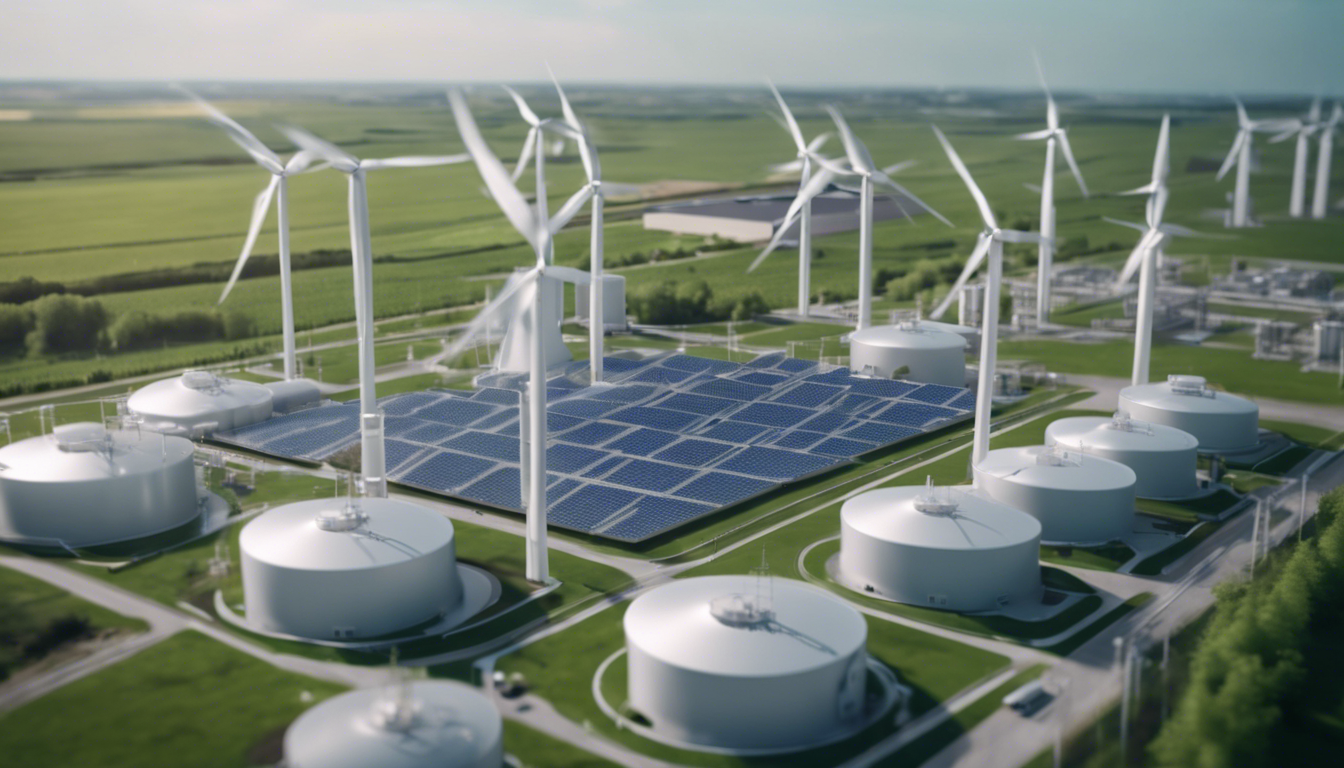The exploration of green hydrogen as a sustainable energy source has garnered significant interest worldwide due to its potential to revolutionize both the industrial and transportation sectors. As the world grapples with the imperatives of climate change and the depletion of non-renewable resources, green hydrogen stands out not only for its environmental benefits but also for its versatility and potential to drive substantial economic growth.
Green hydrogen is produced through the electrolysis of water, a process that splits water into hydrogen and oxygen using electricity generated from renewable sources such as wind, solar, or hydroelectric power. This method of production emits no carbon dioxide, making green hydrogen a truly clean energy carrier. The potential applications of green hydrogen are vast, ranging from powering heavy machinery in industries to fueling buses, trucks, and even airplanes.
One of the major advantages of green hydrogen is its ability to help decarbonize heavy industries such as steel, chemicals, and refining. Historically, these industries have been heavily reliant on fossil fuels, and the switch to hydrogen could significantly reduce their carbon footprint. An example is the steel industry, where hydrogen can replace coal not only to generate heat but also to serve as a reducing agent for iron ore, thus eliminating one of the largest sources of industrial carbon emissions.
In transportation, green hydrogen offers an effective solution for reducing emissions from heavy-duty vehicles, which are challenging to electrify due to their need for high energy density fuel and long-range capabilities. Hydrogen-powered fuel cells are increasingly being seen as a viable alternative for buses, long-haul trucks, and other forms of transportation, including rail and maritime.
However, the widespread adoption of green hydrogen faces several challenges. The cost of producing green hydrogen is currently higher than that of conventional hydrogen production methods, which largely involve the use of natural gas. This cost barrier is attributed to the relatively high expenses of electrolysis equipment and the current price of renewable electricity.
Global interest in accelerating the deployment of green hydrogen infrastructure is evident, with European countries like Germany and France leading the way. Germany has announced extensive funding for new hydrogen technologies and projects, recognizing the role of green hydrogen in achieving its carbon-neutral goals. Similarly, France has launched a hydrogen strategy aimed at decarbonizing its economy, focusing on both industrial applications and transportation.
Japan and South Korea are also key players in the hydrogen arena, each with strategic national plans to incorporate hydrogen technologies into their economies. Japan, in particular, has been a pioneer in using hydrogen as an alternative energy source, with several hydrogen refueling stations already in place to serve fuel cell vehicles.
The development of international hydrogen supply chains is crucial for the global uptake of green hydrogen. Australia is poised to become a major player in this field, with vast renewable energy resources that are suitable for large-scale green hydrogen production. The country is exploring export opportunities, particularly to Asian markets, with initiatives aimed at scaling up production and reducing costs.
Experts believe that for green hydrogen to become a mainstream energy carrier, significant technological advancements are necessary in the fields of electrolysis and fuel cell design. Additionally, there is a need for coordinated policies that encourage the integration of various sectors such as power generation, industry, and transport, and which facilitate the establishment of a global hydrogen economy.
In conclusion, while green hydrogen presents a promising path toward a sustainable future, it requires substantial investment in technology and infrastructure, alongside robust global cooperation. The commitments by various countries and their ongoing research and pilot projects indicate a strong potential for hydrogen to pave the way for a cleaner, greener industrial and transport revolution.
You may also like
Mortgage Refinancing: Costs and various refinancing options
Mortgage refinancing is a financial strategy that can offer homeowners lower interest rates, reduced monthly payments, or different loan terms. This article explores various refinancing options, discusses associated costs and benefits, and compares offers from different lenders to find the most financially advantageous choice.
Online Mortgages: Offers and option for prospective homeowners
In the digital age, securing a mortgage online is an increasingly popular option for prospective homeowners. This comprehensive guide explores the proposals, costs, and benefits of online mortgages, while highlighting potential pitfalls and regional trends. Key comparisons are made between various offers, detailing interest rates, ancillary costs, and demographic trends.
Credit Cards: Examining costs and security considerations across different geographical regions
The credit card landscape offers various proposals, each with distinct advantages and potential drawbacks. This article delves into the details of credit card proposals, examining costs, benefits, and security considerations across different geographical regions. Additionally, it provides a comprehensive comparison to help consumers make informed decisions.
Online Banking : Offer assistance in choosing the best proposal
The article delves into the realm of online banking, examining proposals, costs, and benefits. It provides an in-depth comparison of various online banking options, offering guidance on selecting the best proposition. The article also assesses the geographical impact of online banking adoption, highlighting specific risks endemic to different areas.
